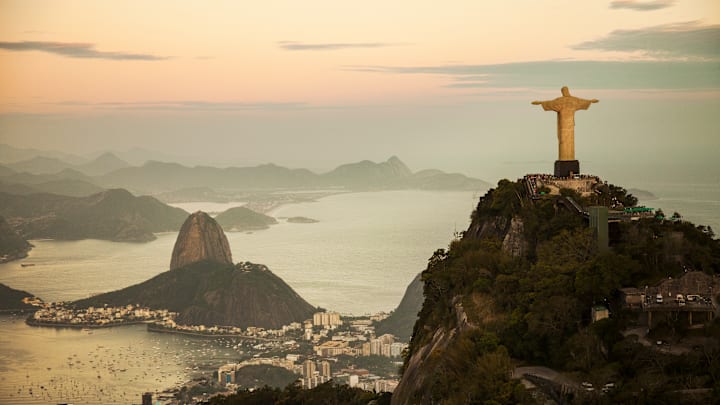If you knew nothing about Latin America, you might assume the region was once occupied by Latin-speaking colonizers. While Latin was never widely spoken across the region, the area did receive its name through it’s connection the dead language.
Where is Latin America?
Latin America refers to a group of countries stretching from Mexico to the tip of South America. Categorized by their Romance language origins, people in these regions generally speak Spanish, Portuguese, and French, reflecting the area’s cultural and political history following the Columbian Exchange.

The name Latin America was borne from the European invasion that began in the 15th century. The term likely was used to distinguish the area from other parts of the Americas (named after Italian explorer Amerigo Vespucci) that were colonized by countries that spoke Germanic languages like English. In fact, the use of the name began as a display of opposition against Anglo-Saxon and Teutonic countries, fostering a regional alignment that was distinct from that of other colonized territories.
A Political Ploy
Despite the common use of the term Latin America today, it did not appear in literature until the mid-19th century, around the time that political economist and philosopher Michel Chevalier began popularizing the description [PDF].
His characterization of the region may have been a ploy to convince those from Latin America to align themselves with the French, potentially expanding Napoleon III’s empire in the process.
American scholar John Leddy Phelan aptly explained Chevalier’s intentions in 1968: “France must reassert in a vigorous fashion that hegemony over the Latin world which belonged to her since the time of Louis XIV. Chevalier exhorted, ‘Only she {France} can prevent this whole family {the Latin nations} from being engulfed in the double inundation of the Germans or the Anglo-Saxons and the Slavs.” This strategy didn’t lead to French domination of the New World, but it did bolster the idea of a unified “Latin” identity.
By 1856, Francisco Bilbao, a Chilean writer and philosopher, used the term Latin America in a speech. Around the same time, writer José María Torres Caicedo, used it in a poem, marking the embrace of the Latin label by those who lived in the region.
In the 1920s, José Vasconcelo, one of the most controversial and influential writers and philosophers of the Mexican Revolution, made the Latino term central to his concept of La Raza Cosmica (“the cosmic race”)—a racially-inclined theory that aimed to erase Indigenous culture to create a new race that transcended them all. Vasconcelos' essay claimed that a mestizo (“mixed”) race would prove to be superior to all others. His writing may have influenced eugenics in Latin America in the first half of the 20th century.
The term Latino is divorced from these racist connotations today, and it’s now used to describe anyone with a Latin American background, regardless of their race and ethnicity.

A Controversial Legacy
Despite the shift in meaning around Latino, the term Latin America is still steeped in controversy today due to its long and complicated history. Opponents of the label claim it was coined to describe a region that was only bound by its history of colonization, simplifying the cultural depth of many countries. Although less widely debated than terms like Hispanic and Latinx, some people believe that Latin America creates a stronger connection to Europe than many natives prefer.
Latin America vs. Hispanic America
Latin America and Hispanic America are erroneously used interchangeably in much of the world today. While Hispanic America refers to countries with a cultural or historical link to Spain where Spanish is the predominant language, Latin America can encompass a broader range of languages, with the common connection being European colonization. The reality is that both terms have evolved to include a variety of definitions and ties.
Somewhere around 660 million people live in the region that’s classified as Latin America today, according to data from the United Nations. There are about 33 countries that make up the territory, including Mexico, Guatemala, Honduras, Nicaragua, El Salvador, Costa Rica, Panama, Belize, Haiti, Cuba, the Dominican Republic, Jamaica, and others. Although Indigenous populations significantly declined following colonization, many native cultures still persevere there today.
Read More About Language:
